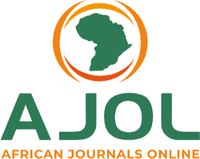Isolation of Quercetin (3, 3’, 4’ 5, 7 – Penta Hydroxy Flavone) from Ethyl Acetate Fraction of Acacia gourmaensis (Leguminoceae/Mimosaceae)
DOI:
https://doi.org/10.56892/bima.v8i1.640Keywords:
Acacia gourmaensis, methanol extract, dichloromethane extract, ethyl acetate fraction, quercetin, IR, NMR.Abstract
This study aimed at investigating and isolating some phytochemical constituents present in the methanol and dichloromethane extracts and ethyl acetate fraction, and to validate the antimicrobial, antioxidant, and anti-inflammatory claims of Acacia gourmaensis. Dried stem bark powder of Acacia gourmaensis, locally known as ‘Anaka in Igala in North Central and kaya yawo in Hausa of Northern Nigeria of the family Fabaceae, was subjected to cold successive maceration using dichloromethane (DCM) and methanol (MeOH) to afford dichloromethane extract (DCM-E) and methanol extract (MeOH-E). The MeoH-E was partitioned with ethyl acetate to afford ethyl acetate fraction (EA-F) and residual methanol extract (RMeOH-E). The EA-F fraction was subjected to repeated column chromatography leading to the isolation of a yellow substance (coded EAF10). The substance was identified as Quercetin (3, 3’, 4’, 5, 7 Pentahydroxy flavone) when subjected to physical, chemical and spectroscopic analysis using IR, 1H-NMR, 13C -NMR data and by comparing the data with reference material.





